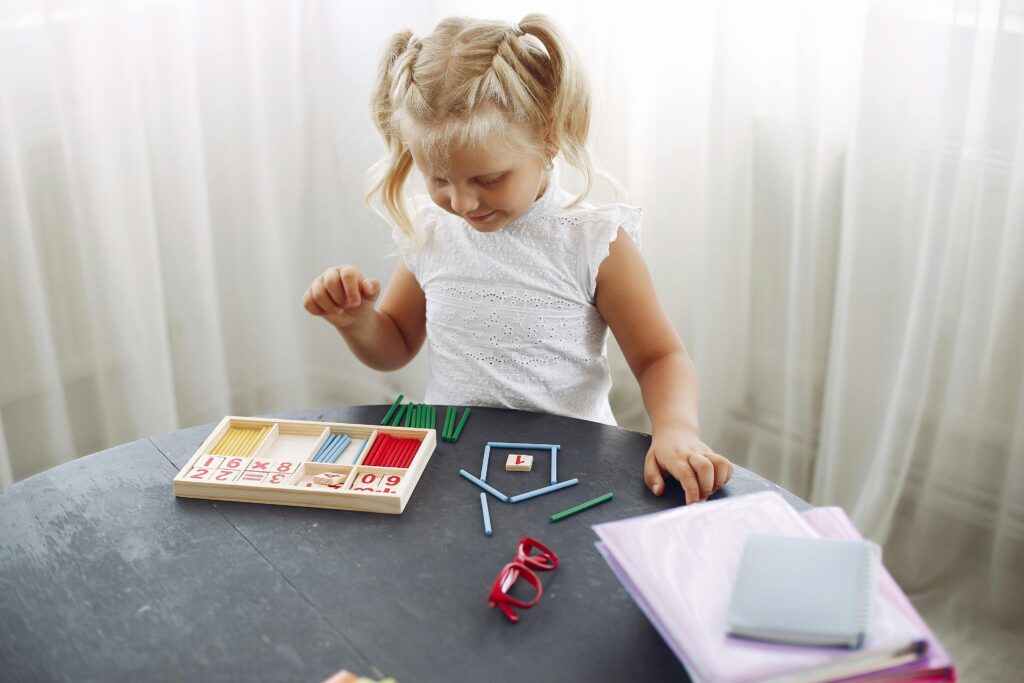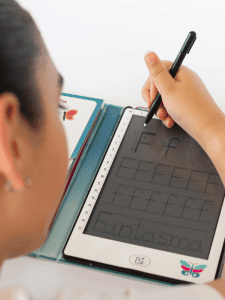Introduction: The Montessori Secret to Raising Confident, Curious Kids
“Never help a child with a task at which he feels he can succeed.” —Maria Montessori
If there’s one thing I’ve learned as a parent, it’s that kids are natural explorers. They don’t need constant direction or micromanaging—they need the freedom to make their own discoveries. That’s what drew me to the Montessori approach: it’s about fostering independence, curiosity, and a sense of responsibility by letting kids take charge of their own learning.
When I discovered the WonderPad and its endless activity cards, I realized it could bring this philosophy into our home in such a fun, practical way. It’s not just another screen or learning tool—it’s designed to encourage kids to explore, solve problems, and build skills on their own. And honestly? The results have been amazing.
This is the first of a two-part series where I’ll share how the WonderPad supports Montessori-inspired learning. In this article, we’ll explore how it fosters independence and hands-on exploration. In the next article, I’ll dive into how it nurtures creativity, problem-solving, and practical skills. Together, these tools can give your child a head start in developing lifelong skills—and make learning fun along the way.
Fostering Independence Through Self-Directed Learning
I’ll admit, the idea of letting my child “take charge” of their learning was a little nerve-wracking at first. Would they actually stick with it? Would they learn enough? But Montessori philosophy teaches us that kids are naturally curious. When they have the freedom to explore what interests them, they engage deeply and learn because they want to—not because they’re told to.
The WonderPad makes this kind of self-directed learning so easy. Its activity cards give kids the power to choose what excites them. My child loved starting with simple tracing cards and counting glowing mushrooms in the magical world of Wonderia. And the best part? They didn’t need me hovering—they were motivated to explore on their own.
Before long, I noticed something incredible: their confidence started growing. Finishing a tricky maze or solving a counting challenge wasn’t just about getting it “right”—it was about discovering what they could accomplish by themselves.
The WonderPad mirrors Montessori’s idea of “freedom within limits,” where children have the autonomy to make choices within a structured framework. By giving my child the chance to pick their own activities, it built their independence and decision-making skills while making learning a lot more enjoyable.
Supporting Hands-On, Sensory-Based Learning
One thing I’ve always loved about Montessori education is how it values hands-on, sensory-based learning. It’s about engaging kids’ senses—letting them feel, see, and interact with the world around them as they learn. The WonderPad surprised me by blending this tactile approach with digital tools so seamlessly.
For example, tracing letters and numbers with the WonderPad’s pen feels a lot like traditional pencil and paper, but with an extra spark. The activity cards connect abstract ideas to real-world visuals, like counting mushrooms or tracing lightning bolts for the number “8.” It’s interactive, engaging, and totally Montessori-approved.
What I found most exciting was how these activities improved my child’s hand-eye coordination and fine motor skills. Tracing shapes, navigating mazes, or drawing their favorite dragon didn’t just teach them letters or numbers—it helped them master foundational skills they’ll need for writing and problem-solving.
Montessori called this sensorial learning, and I could see it in action every time my child used the WonderPad. They weren’t just staring at a screen—they were exploring concepts with their hands and senses, turning abstract ideas into real understanding.activities thoughtfully—a key Montessori principle—and begin to see themselves as capable learners.
¿Qué sigue?
This is just the start of why I love the WonderPad. In this article, I’ve shared how it fosters independence and engages kids in hands-on learning. But there’s so much more to explore.
In the second part of this series, I’ll talk about how the WonderPad nurtures creativity, encourages problem-solving, and builds practical, real-world skills that kids can carry with them for life. These tools don’t just teach—they inspire.
For now, I’ll just say this: if you’re looking for a way to make learning fun, meaningful, and Montessori-inspired, the WonderPad is absolutely worth a try.
Stay tuned for Part 2 by signing up for our newsletter—you won’t want to miss it!s confidence in making decisions—a skill that will benefit them for years to come.



